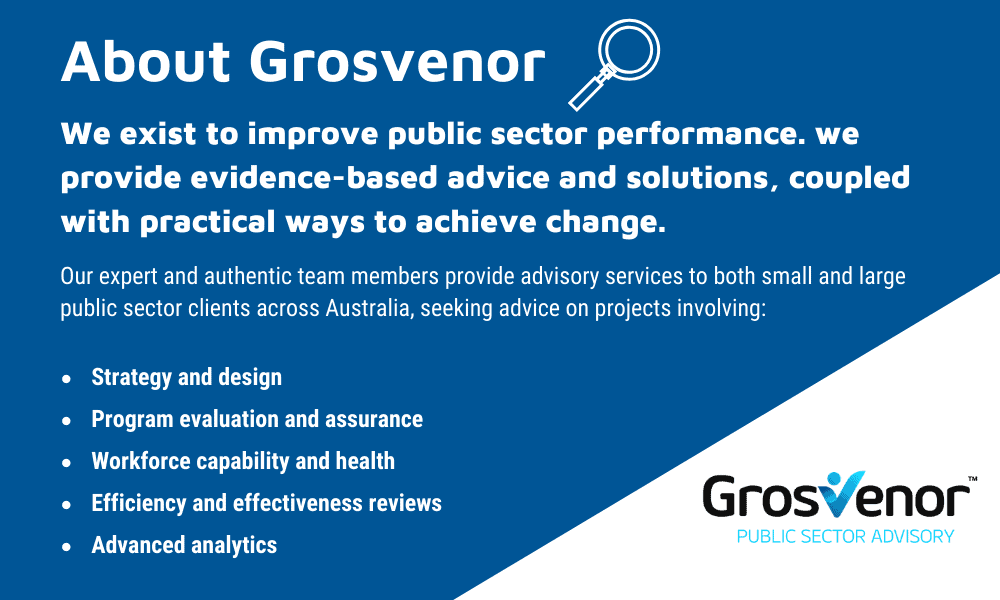Four building blocks for a people-centric government

Are you people centric?
Program managers know that focusing on customers and effective stakeholder engagement are key to great policy and program delivery. But there are often organisational barriers to implementing effective participatory processes.
These can include:
- Immature approaches to risk
- Lack of permission to engage with internal and external stakeholders, or worse, tokenistic engagement
- Short term focus
- Lack of necessary capabilities.
So, what does the public sector need to look like at a whole-of-government and whole-of-organisation level to enable program managers to implement best practice?
The OECD Government at a Glance Report 2019 takes a look at the progress governments have made towards people-centricity through a range of indicators covering inputs, processes and outcomes.
Why should you aspire to be people-centric?
Because a people-centric government can:
- Rebuild people’s trust in government which is still flagging after the global financial crisis in 2008
- Improve the effectiveness of public administration
- Better respond to global and domestic challenges, such as aging populations, widening income gaps and the rate of digital technology change.
“People-centricity means taking the needs and voices of people into account when designing, delivering, implementing and evaluating public policies and services.” – OECD, 2019, p.27
Sounds great! So how can we be more people-centric?
The four building blocks below are essential enablers to realise people-centric government. Each needs to be in place to harness the power of people-centric government.
A focus on genuine participation
To deliver the necessary services, at the right time and in the right way requires a detailed understanding of peoples’ needs and expectations. It includes the recognition that our needs and expectations are not homogenous and will rarely (if ever) be met by a one size fits all approach. Indeed, an individual’s expectations of a single government touchpoint can be altered by context.
This means:
- Making space for people’s participation in policy/program design, delivery, implementation and evaluation
- Allowing time for real input and providing feedback about how input has influenced the outcomes
- Having ‘people-centricity’ as a shared objective across policy and administrative settings
- A commitment to learning and improvement by evaluating if expectations have been met.

Build a diverse and capable public sector workforce
Being people-centric is not only about participation and engagement. To be truly people-centric government requires a public service that is representative and inclusive of its society. The skills and capabilities within the workforce also need to be able to deliver on people’s expectations in a changing and increasingly digital world.
The public service workforce is a key lever for delivering efficient, effective, empathetic and inclusive services.
This means:
- Being aware of both the capabilities and characteristics of the public sector workforce
- Understanding the future capabilities and characteristics needed
- Creating a culture of empathy and inclusiveness
- Harnessing the diversity of talents, skills and points of view to better tailor policies and services
- Leveraging diversity for innovation by using previously untapped knowledge, networks and perspectives.
Open government
While definitions vary, open government is based on good governance principles and is underpinned by transparency, accountability and participation. It includes the disclosure and accessibility of government information, the obligation to disclose decisions and performance, and the participation of people in all activities and phases of government administration.
This means:
- Open government is context specific and requires a local definition to facilitate a shared understanding
- It is multifaceted and benefits from a coordinated national strategy which picks up the many threads
- Being innovative with participatory practices while focussing on cost effectiveness and impact
- Integrating open government practices within national strategies to enhance collaboration and breakdown silos
- Ensuring the policy and legal frameworks support open government. For example, an independent and free media.
Evidence-driven
To be truly people-centric government needs to use existing and new evidence at all points in the policy development and program delivery cycle.
This means:
- Managing data as a strategic asset, including understanding the role and use of big data
- Proactively using data to anticipate change, forecast needs, and plan
- Monitoring the implementation and delivery of policy and programs to drive continuous improvement
- Systematically evaluating policy and programs to assess performance (and feed back into the design process).

Sources
OECD (2019), Government at a Glance 2019, OECD Publishing, Paris, https://doi.org/10.1787/8ccf5c38-en.
OECD (2016), Open Government: The Global Context and the Way Forward, OECD Publishing, Paris. https://doi.org/10.1787/9789264268104-en
Department of Prime Minister and Cabinet (2019), PolicyHub: Delivering Great Policy, Commonwealth of Australia, https://www.policyhub.gov.au/index.php/approach










 We are all about sharing our expertise to help you and your organisation be the best it can be.
We are all about sharing our expertise to help you and your organisation be the best it can be.